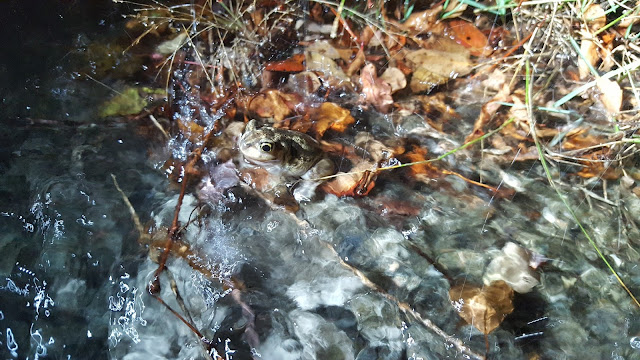Spadefoot toads are a state listed Threatened species in Massachusetts. The Massachusetts Natural Heritage and Endangered Species Program published this natural history description of the species here: Eastern Spadefoot Toad (Scaphiopus holbrookii).
The other night I went out to re-survey the same site. The weather was unusually warm for the end of October with heavy rains most of the day and into the night. I had a feeling the warm rain event would trigger activity and sure enough I was correct! Over the course of a 3 hour survey I found 25 Eastern Spadefoot toads.
There happened to be one car leaving the Refuge late at night and unfortunately I found three squished toads that were not there at the beginning of my survey. Luckily the Refuge is closed to traffic entering the Preserve after dark which greatly limits the risk for road mortality.
I was caught in a heavy rain/wind/lightning storm during most of the survey. Thankfully I was wearing full chest waders and a rain jacket. My camera (Samsung Galaxy S6 phone) got a bit wet and after the battery died decided not to charge until the next day after storing it in our rice container overnight. Luckily it worked the next morning and I was able to save and share these photos.
Update: My friend Don Lyman wrote this story up for the Boston Globe North print edition on 11/27/2016.
 |
| Road cruising survey vehicle, 1979 Honda Hobbit moped. |


















